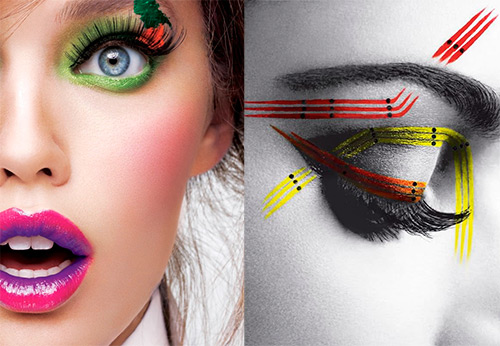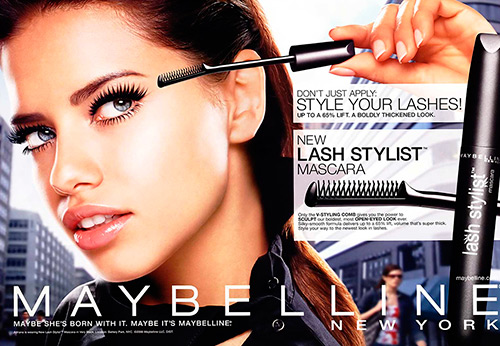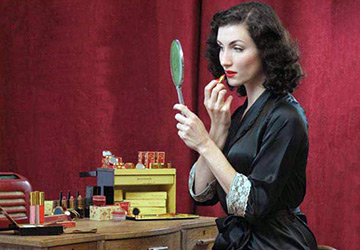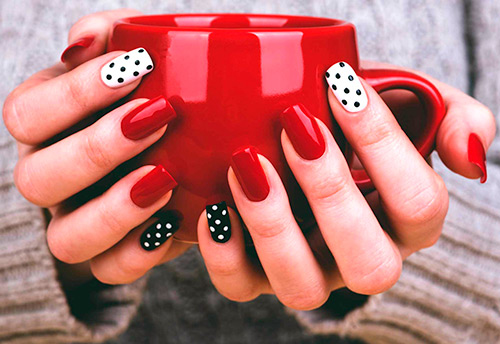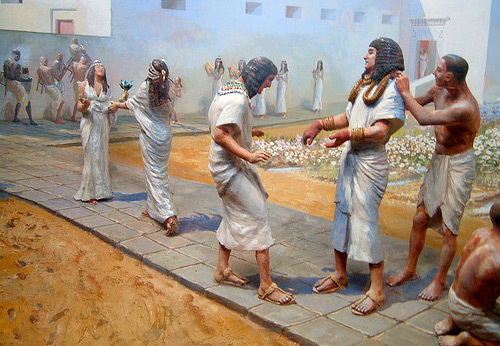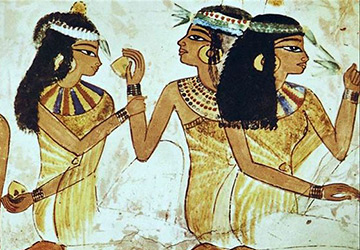Fashion history
Contour eyeliner in the history of cosmetics
Kajal (soft eyeliner pencil) is one of the oldest cosmetics. The fashion of eyeliner and eyebrow dyeing appeared in the days of Ancient Egypt. And, perhaps, if not for the ancient Egyptians and their love for eyeliner, today we would not have painted our eyes at all.
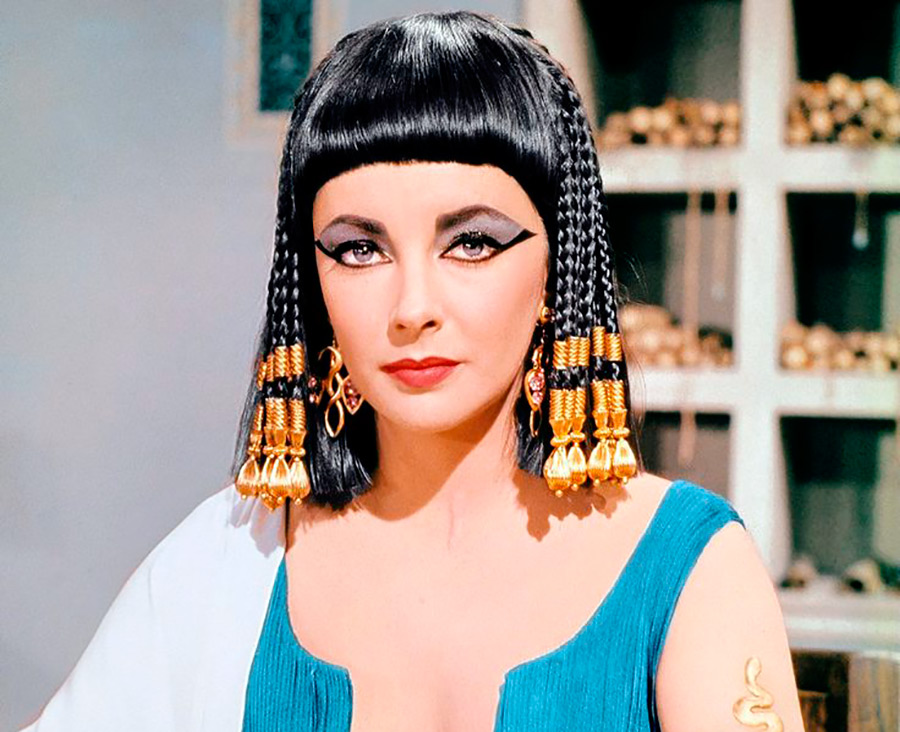
Elizabeth Taylor as Cleopatra
Eye makeup in ancient Egypt
In ancient Egypt, everyone used eyeliner - women, men, pharaohs, and ordinary people. The color of the eyeliner and eyebrow dye was most often black. However, there were also green and blue paints.
“Suitable for every day, from the first to the fourth month of the rain season, from the first to the fourth month of winter and from the first to the fourth month of summer,” reads the inscription on a paint can from the times of Ancient Egypt. This jar from the tomb of an ancient Egyptian scribe is now kept in the British Museum.
Kayal in Ancient Egypt was made from mixtures of lead, burnt almonds, copper oxide, ash, antimony (a silver-gray metal-like material), chrysocolla (a blue-green copper ore), malachite (a green sulfur oxide pigment).
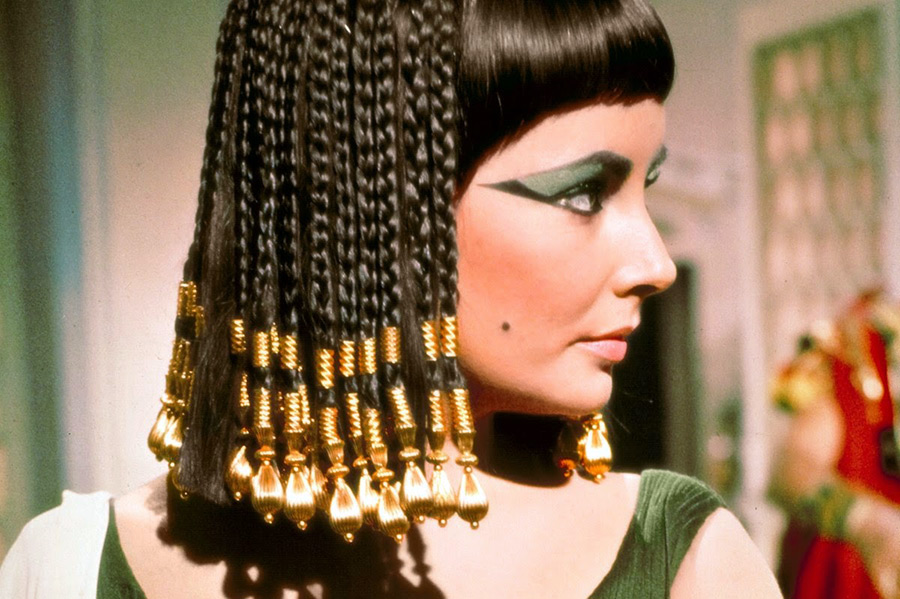
Elizabeth Taylor as Cleopatra
Green eye paint in ancient Egypt it was called "uju". It was based on green malachite, which was mined in Sinai. It was believed that Sinai was patronized by the ancient Egyptian goddess Hathor - the goddess of beauty and love. The goddess Hathor was also called the "mistress of malachite".
Dark gray eye paint was called "medsmet". It was made from antimony sulfite - stibnite or from lead sulfide - poisonous galena, which was mined on the coast of the Red Sea.
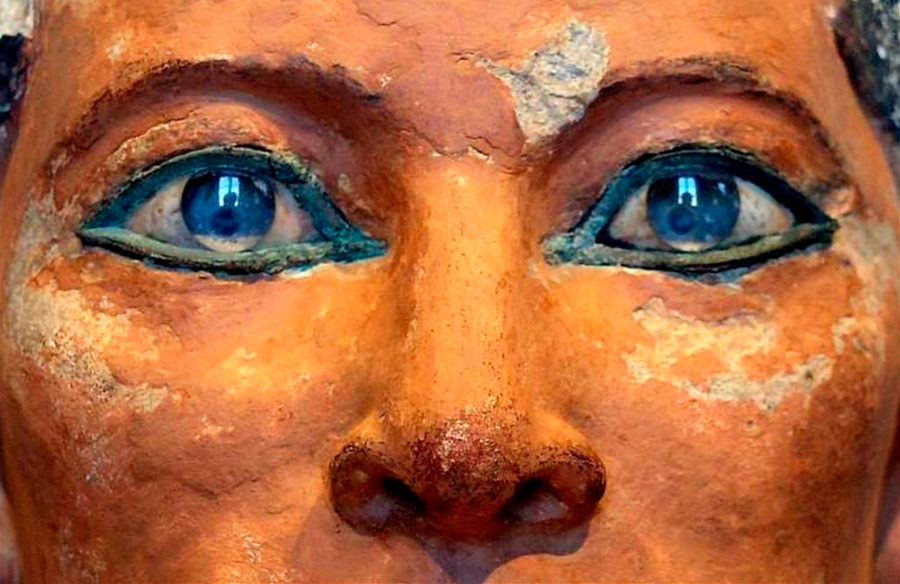
Sculpture of the ancient Egyptian scribe Kai - face
During the Old Kingdom period (circa 2686 - 2181 BC), green eye dye predominated in ancient Egyptian makeup. In the New Kingdom (about 1550-1070 BC), the eyes in Ancient Egypt were mainly drawn with black paint.
In Europe in the 1920s, the fashion for eye makeup in the ancient Egyptian style appears
In 1922, when the untouched and not plundered tomb of Pharaoh Tutankhamun was excavated, images of the pharaoh with dark eyeliner were discovered.
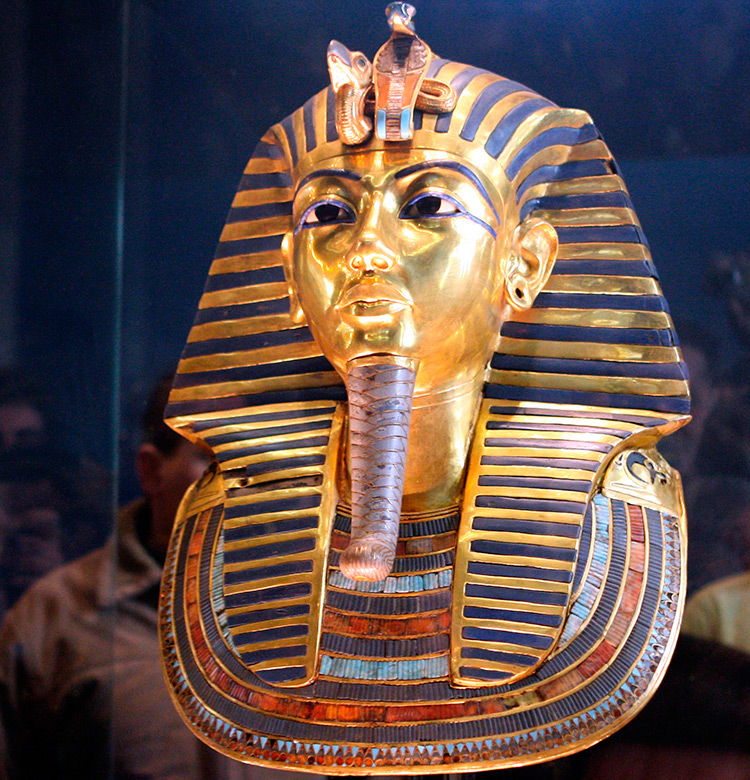
Tutankhamun's mask
It was in the 1920s, both in connection with the excavation of the tomb of Tutankhamun, and in connection with the demonstration of the bust of Nefertiti to the general public in 1924, that a period of great interest among Europeans in the heritage of Ancient Egypt began. And it was in the 1920s that the fashion for kayal, a contour pencil used for eyeliner, was born in Europe.
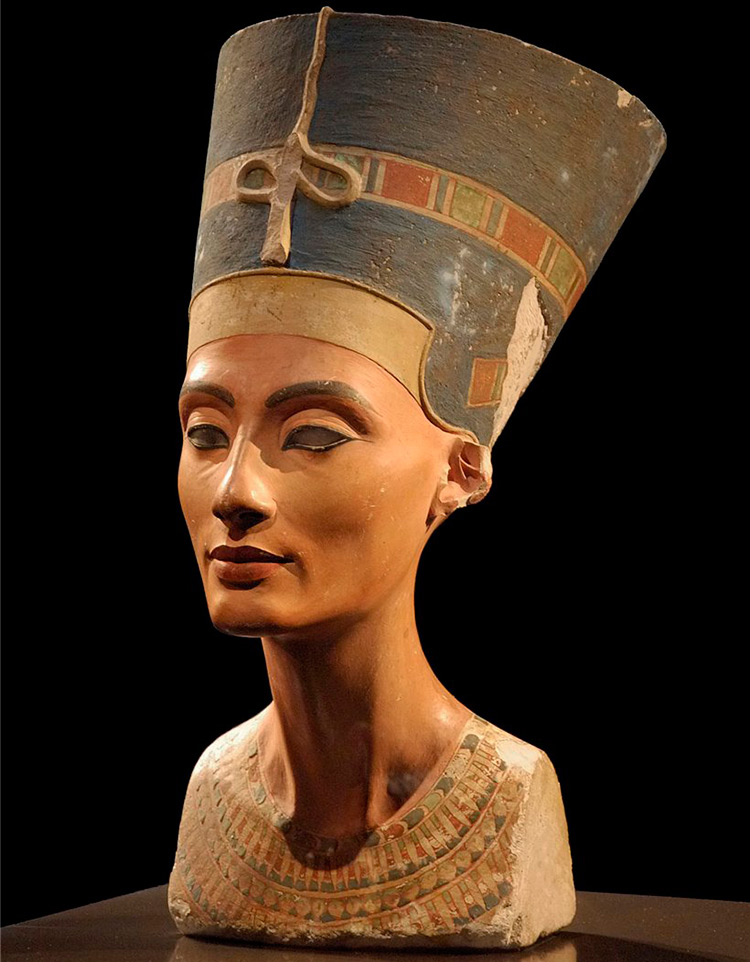
Bust of Nefertiti
She was considered the most beautiful queen of ancient Egypt
The second burst of Egyptian makeup fashion in Europe will take place in the 1960s, following the release of Cleopatra, starring Elizabeth Taylor.
In ancient Egypt, eyes were painted for protection
from infections and evil spirits
from infections and evil spirits
In ancient Egypt itself, the fashion for eyeliner originated in connection with quite practical purposes. The paint, which was applied along the contour of the eyes, protected the eyes from gnats and infections.
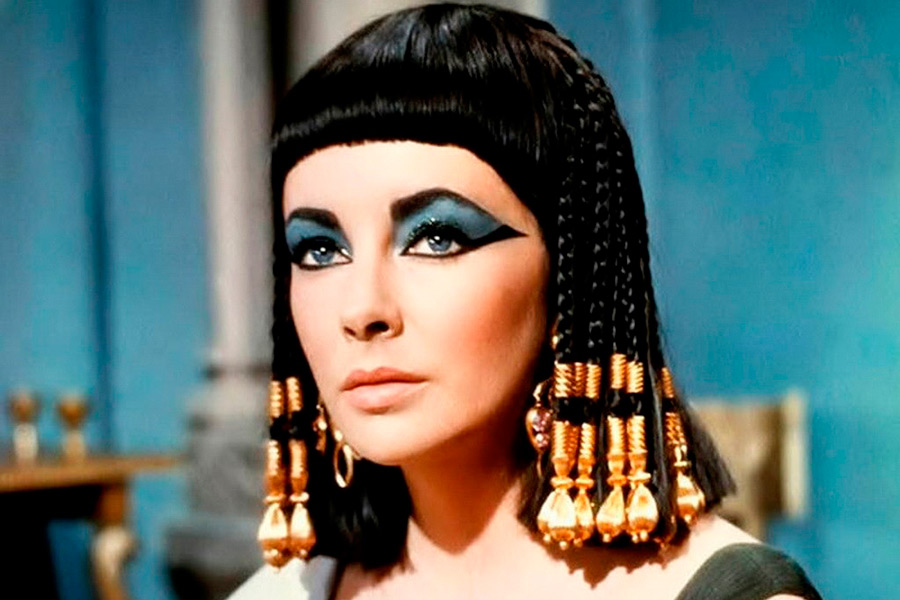
Elizabeth Taylor as Cleopatra in the 1963 film
In 2010, French scientists, together with the Loreal Recherche et Innovation laboratory, conducted a series of studies on ancient Egyptian cosmetics from the Louvre store. And in the end, they came to the conclusion that there are four lead-based substances in cosmetics from Ancient Egypt, which help to triple the production of nitric oxide in skin cells. This, in turn, leads to the body's resistance to eye infections.
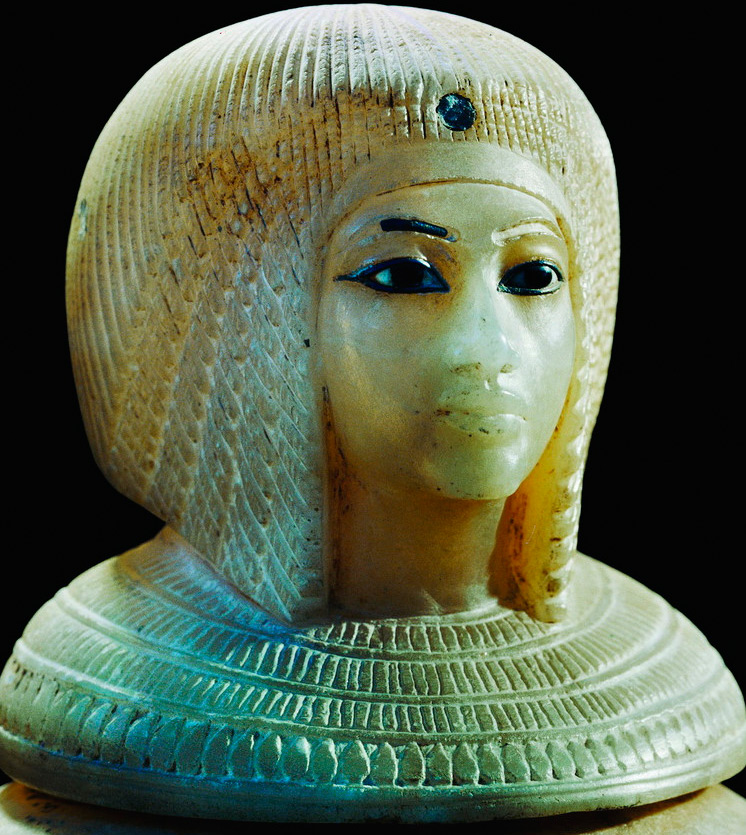
Canopa is in this case a vessel in the form of a woman's head. In such vessels, the insides removed from the body during the rite of mummification were kept.
Was discovered in tomb number 55 during the reign of Pharaoh Akhenaten - he was the husband of Nefertiti
Another function of eye makeup in ancient Egypt is religious. The Egyptians believed that evil spirits could penetrate into the human body through the eyes and take possession of it. The eyeliner was supposed to protect a person from evil spirits.
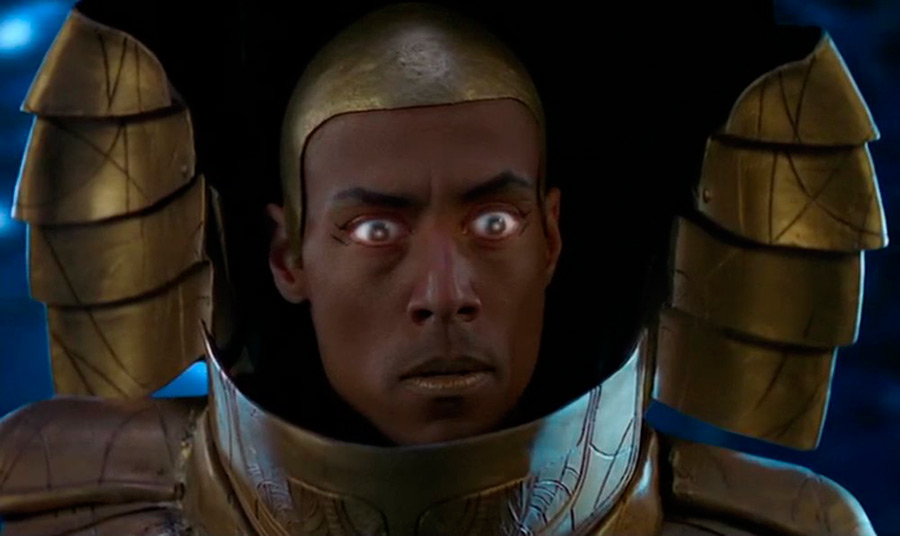
God (alien) took possession of the human body
Shot from the fantastic series "Stargate"
The series is based on ancient Egyptian mythology
By the way, the ancient Egyptian protective talisman of Horus's eye was boldly outlined along the contour, that is, the same eyeliner.
But the idea that you can paint your eyes and eyebrows just for beauty did not exist in ancient Egypt.
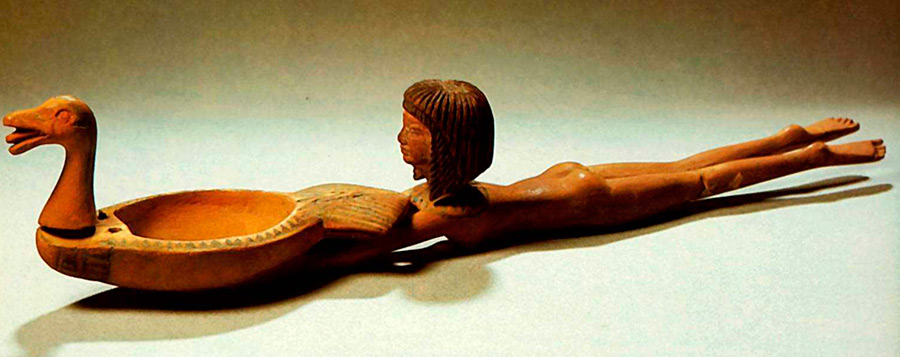
A toilet spoon from the times of ancient Egypt for storing cosmetics
Such spoons could contain, for example, antimony
Such spoons were closed with a lid
In this case, the spoon lid was not preserved.
Ancient Greece and the fashion for fused eyebrows
Beauty cosmetics will appear only in the days of Ancient Greece. Both in ancient Greece and in ancient Rome, they used eyeliner and dyed eyebrows. Moreover, the eyebrows of the inhabitants of ancient Athens were painted in one line, that is, they were connected together. And in ancient Rome, Egyptian-style eye makeup was popular among noble ladies. For its application, even Egyptian slaves were bought.
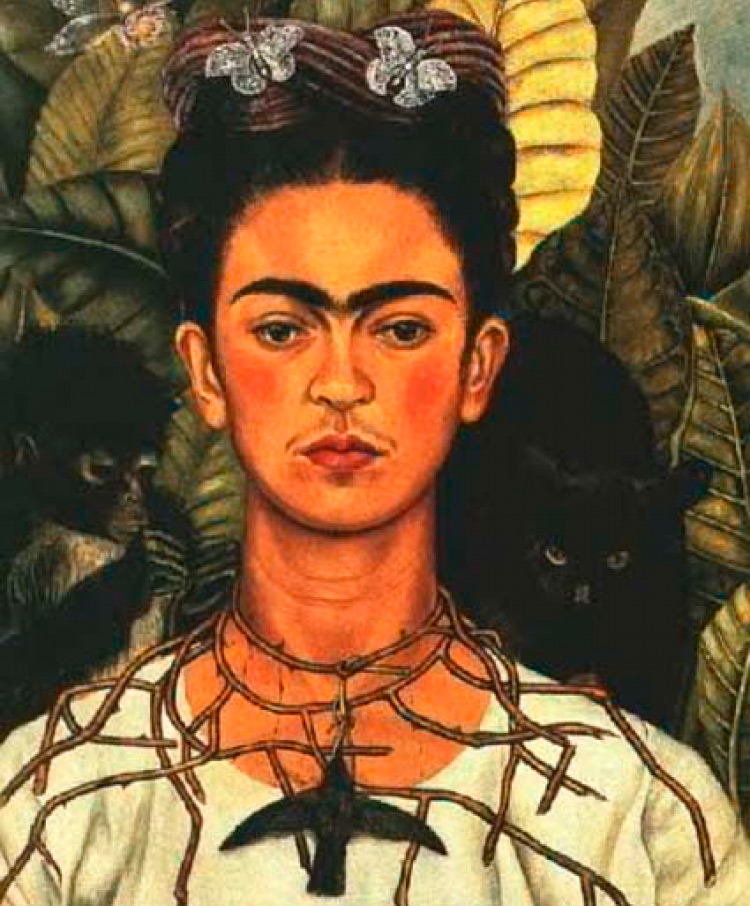
Self-portrait of Frida Kahlo (Mexican artist of the first half of the 20th century) with a crown of thorns and a hummingbird
It was these eyebrows, as in this picture, that were considered beautiful in the days of Ancient Greece among the Athenians
However, both in Ancient Greece and in Ancient Rome, bright eye makeup was condemned. Brightly colored eyes in antiquity were considered a sign of women of easy virtue.
As dyes in Ancient Greece and Ancient Rome, ash, burnt cork, and the mineral antimonite (aka antimony) were used.
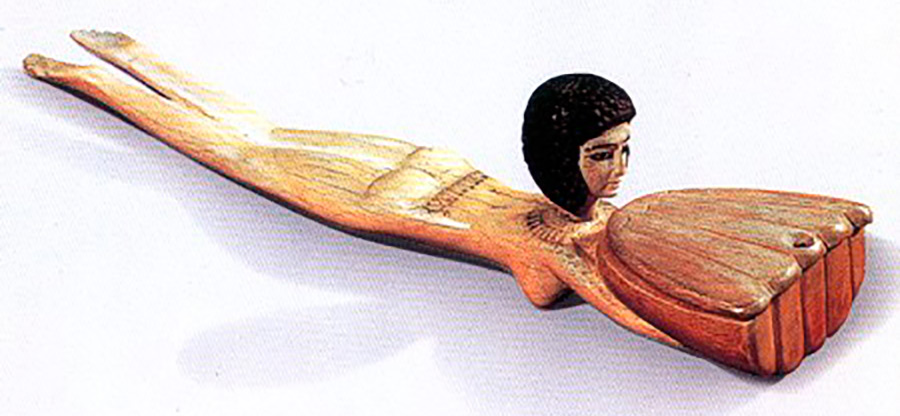
Another toilet spoon for storing cosmetics from Ancient Egypt
Time - about 1288 - 1350 BC.
After the collapse of the Roman Empire in Europe, eyes and eyebrows were not painted. In the Middle Ages, cosmetics were generally recognized as "the colors of the devil." And they even tried to get rid of eyebrows and eyelashes altogether, shaving and plucking them. In those days, a smooth forehead was considered beautiful. During the Renaissance (XV-XVI centuries), almost invisible, not painted eyelashes, eyebrows and eyes were also considered beautiful.
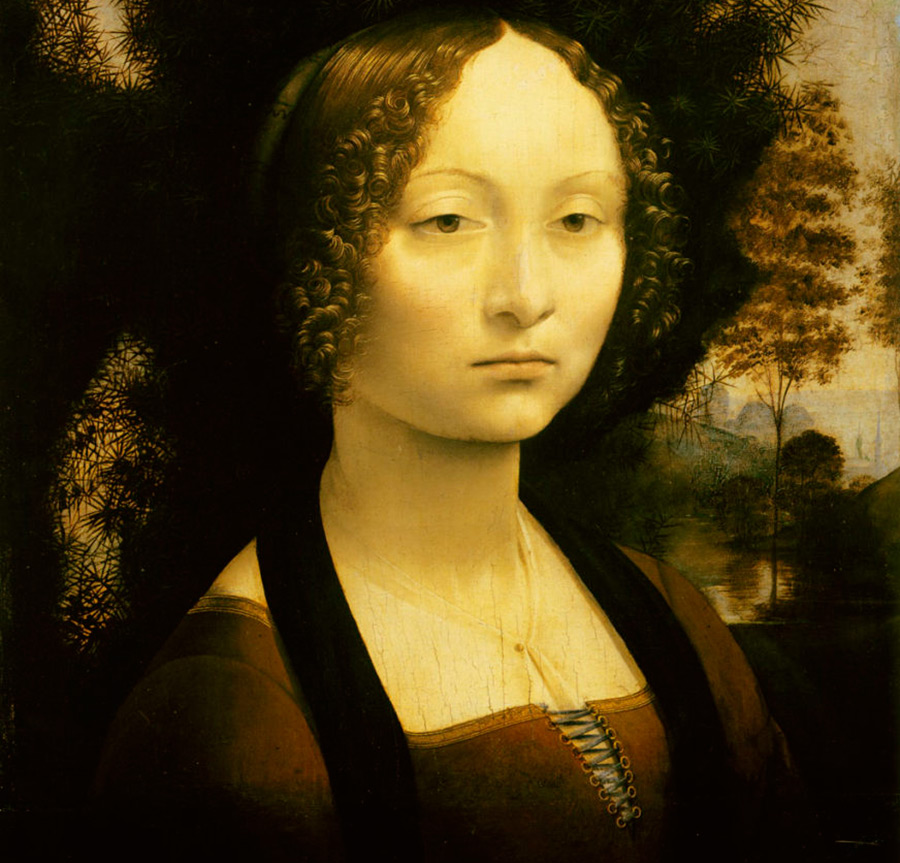
Leonardo da Vinci
Portrait of Ginevra de Benci - a poetess from Florence, who lived in the 15th century.
Eyebrows and eyes are not made up according to the fashion of the time.
And only in the makeup of the 17th-18th centuries black dye appears again - so far only for eyebrows. Black eyebrows, as well as bright scarlet blush and scarlet lipstick on a completely whitewashed face, in the rococo style (18th century) makeup were supposed to highlight and emphasize the unnatural pallor of the face.
Eyebrows in the 17th-18th centuries could also be tinted by men.
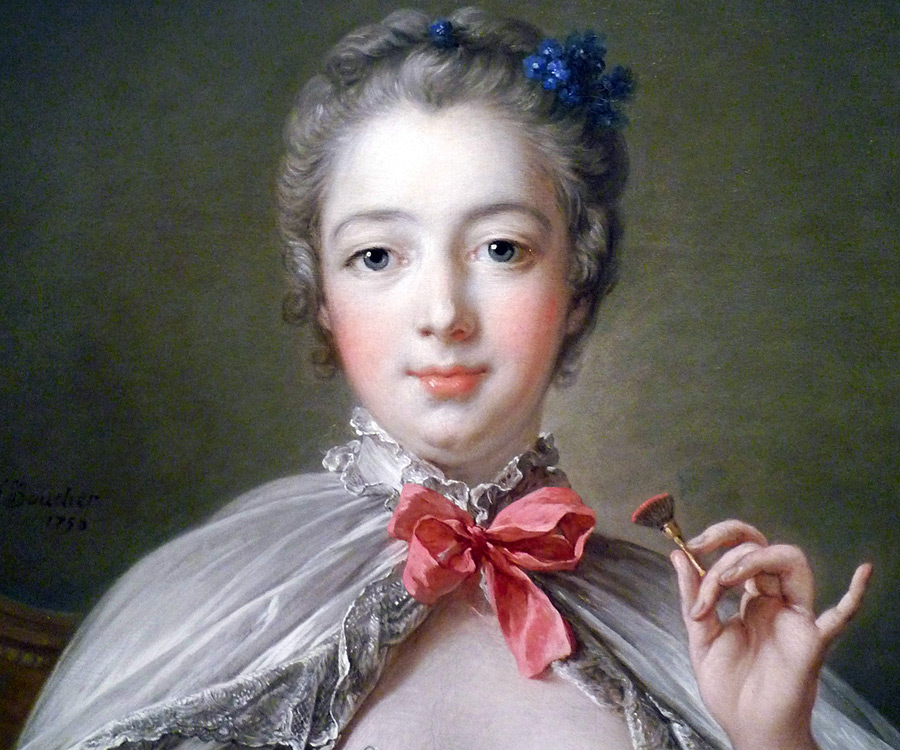
Francois Boucher
Portrait of the Marquise de Pompadour
XVIII century
In the XIX century in Europe again the time of pallor - cosmetics are not favored and only actresses and singers use it. But in the twentieth century, with an interest in the ancient Egyptian heritage, the fashion for eyeliner reappears. Now, in classic makeup, the emphasis is either on the lips or on the eyes.
Eye makeup in the East
But there were also countries where eyeliner never went out of style. These are the countries of the Middle East, as well as India.
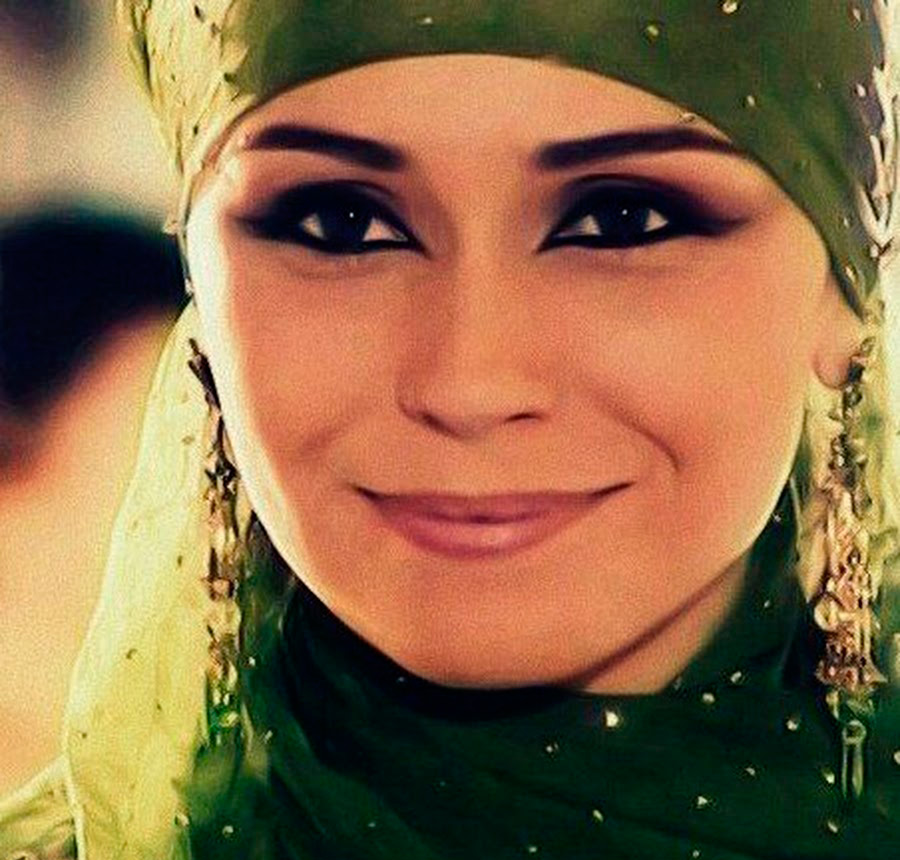
Zhadi, the main character of the TV series "Clone"
Makeup in oriental style
In addition to Ancient Egypt, Persia can also be considered the birthplace of Kayal. Today this territory is called Iran.
In Persia, kayal was considered one of the oldest cosmetics. As in Ancient Egypt, it was originally used for medicinal and ritual purposes. However, then it became an indispensable part of oriental makeup.
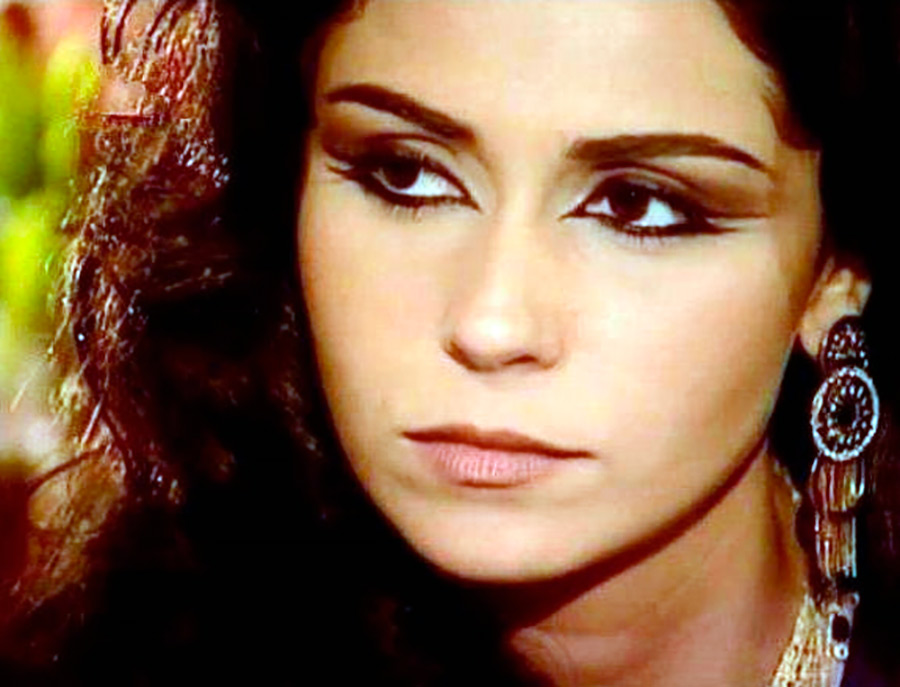
Zhadi, the main character of the TV series "Clone"
Makeup in oriental style
In ancient Persia, powdered iron ore or the same antimony was used as a dye for eyeliner. Antimony was obtained from the antimonite mineral, which was ground into a powder like ash.
The Arabs borrowed Persian makeup. And even today it's hard to imagine middle eastern bride without smudged eyes. In Arabic, antimony is called kuhl (kohl). Kochl powder can still be bought in the East, as well as in online stores.
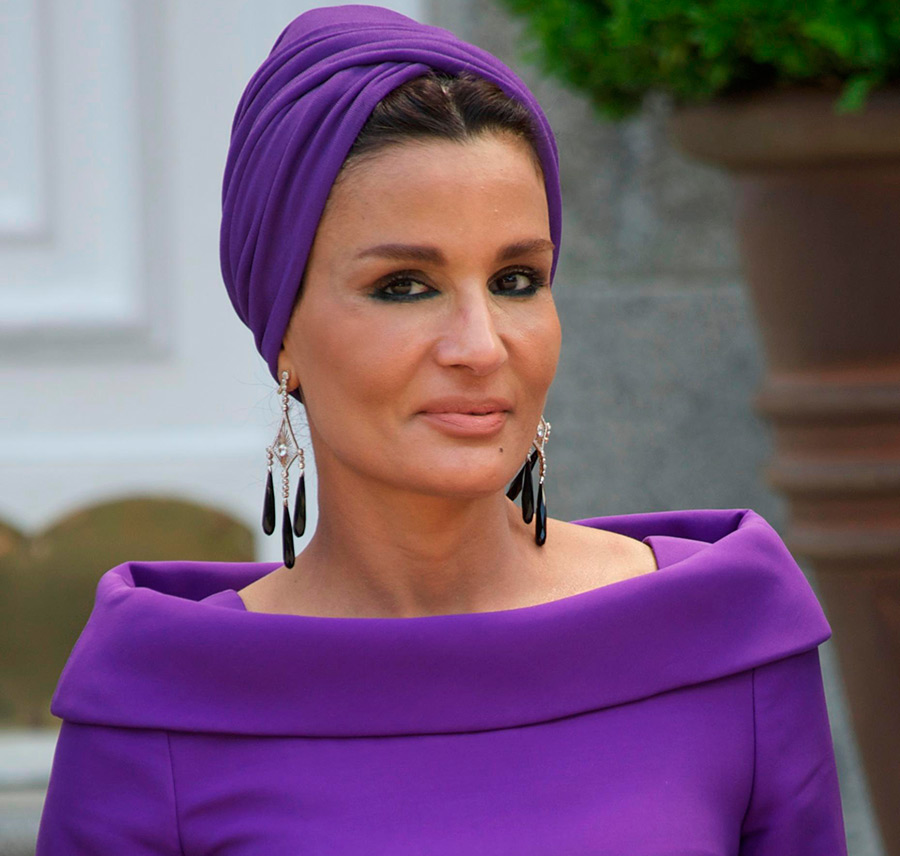
In the photo, Sheikh Mozah is the wife of the ruler of Qatar
In India, kohl is called kajal. The advantage of such an eye paint is its naturalness and no shelf life. Kohl can be stored forever without fear that it will deteriorate. Kohl also strengthens eyelashes and eyebrows, protects the eyes. As in ancient Egypt, from eye infections.
Kohl can be mixed with camphor, which is also a herbal medicine and has antiseptic properties.
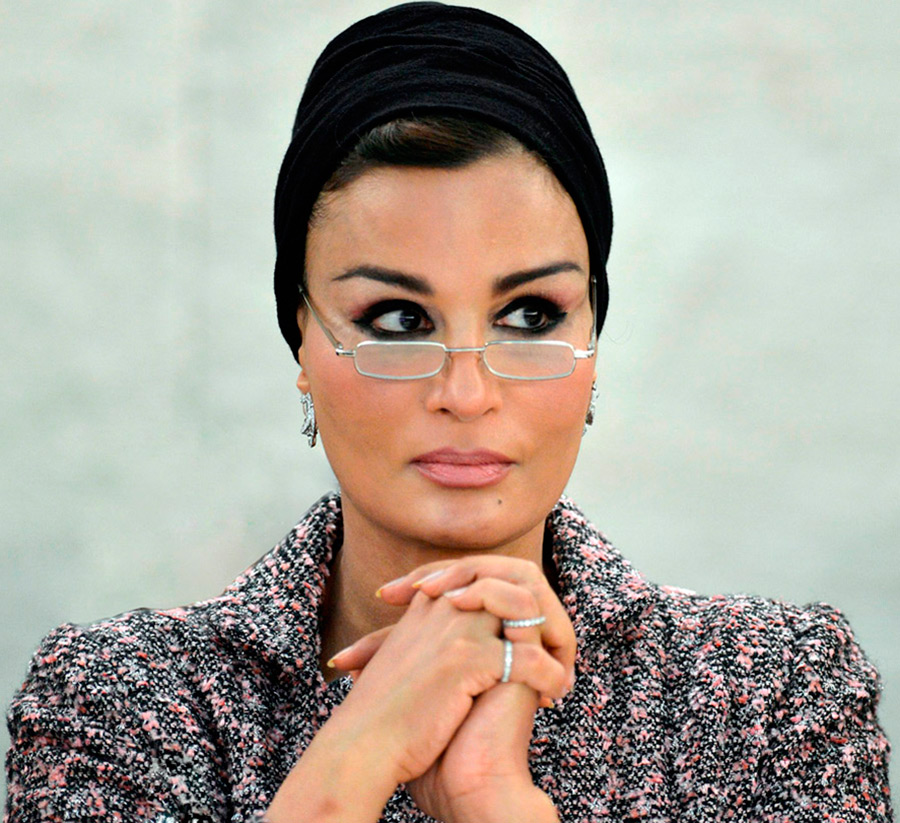
In the photo, Sheikh Mozah is the wife of the ruler of Qatar
Today, kohl can be either in the form of pencils or, as in antiquity, stored in jars and applied using a special stick.
But it should be borne in mind that the kohl, which is produced and sold in the East, may not be safe, since it will still most often contain lead in its composition.
Contour eyeliner in Europe
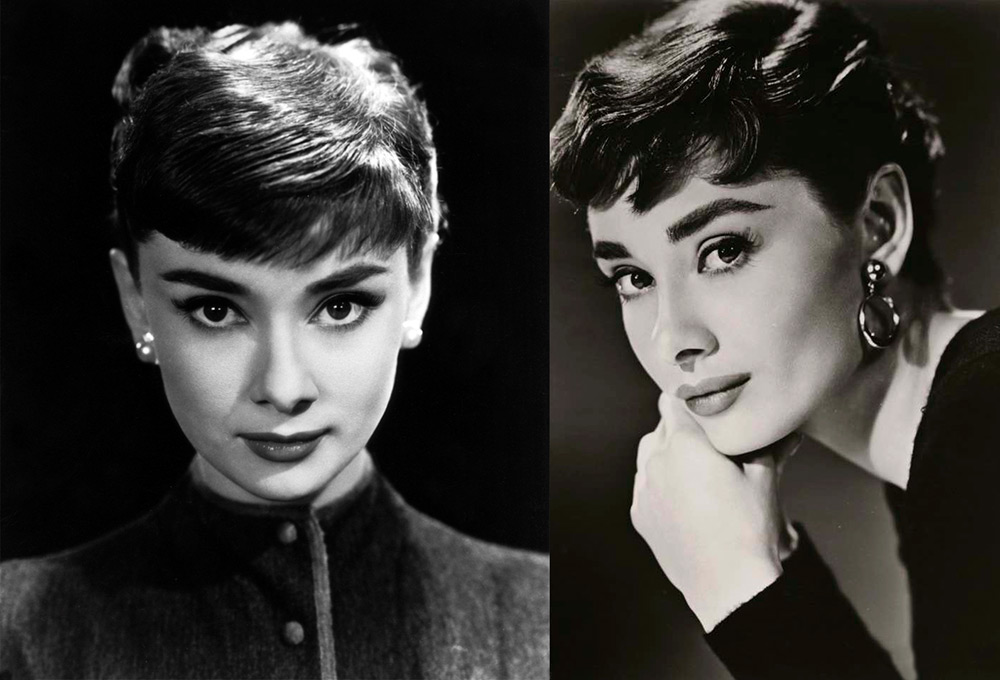
Audrey Hepburn
The composition of contour eyeliners, which were produced in the 20th century in Europe and America, included charcoal, soot (amorphous carbon), vegetable oils, seed oils, and resins, which served as a binder.
Today in Europe and America, in the production of contour pencils, which are marked as kohl, and also kayala, soft contour eyeliners, soot is used as a dye, and they contain vegetable oils and minerals, but no lead. However, such kayals are similar in their properties to the eastern ones.
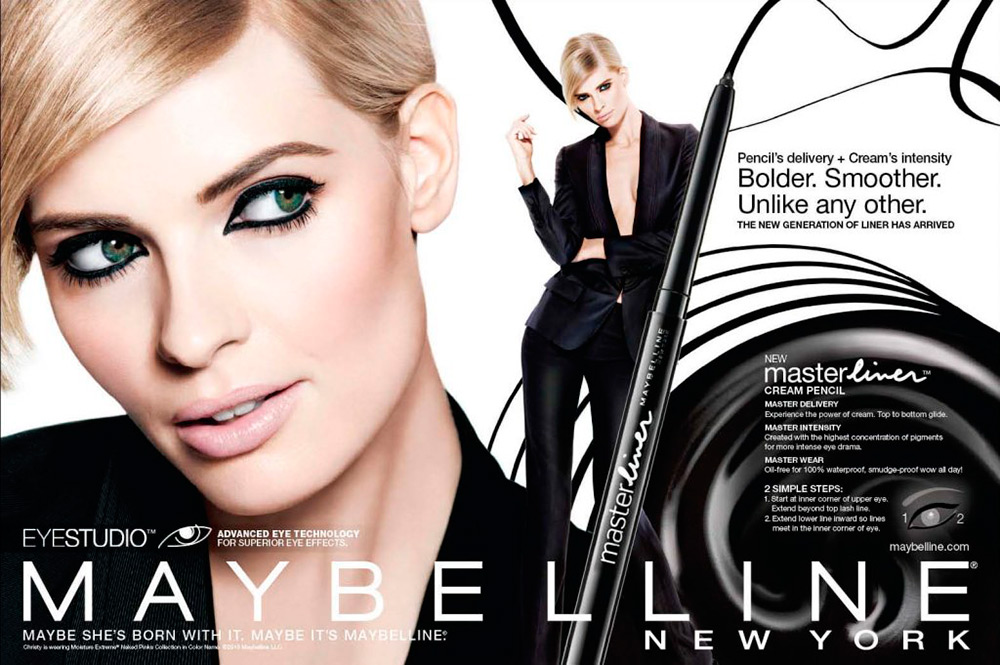
The composition of modern contour solid eyeliners can include substances such as:
1. Wax - it is used as a base for many contour eyeliners as well as eyebrow pencils
2. Castor oil - has antiseptic properties
3. Silicone cyclopentaxiloxane - it makes the skin softer and silky, removes the feeling of stickiness from applying eyeliner
4. Polybutene - eliminates the spreading of the dye, and also forms a transparent film that protects the skin from adverse environmental influences
5. Polyethylene - the component that holds the ingredients in the contour stick together
6. Preservatives, for example, butylparaben, which eliminates the appearance of harmful microorganisms in cosmetics
7. Dyes, both natural, most often mineral, and synthetic
8. Vegetable oils
9. Flavors
In addition to kayal (a soft contour pencil for the eyes) and harder contour pencils, today there are also shadow pencils (their difference is a soft texture and a bright dye), liners (a liquid eyeliner that can be applied with a brush or an applicator).
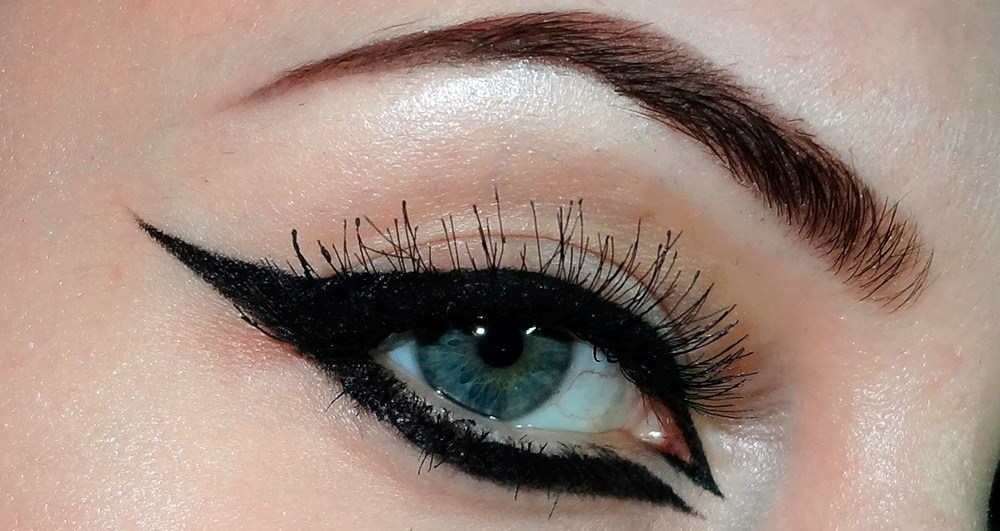
And the ancient Egyptian kayal became the prototype not only of modern contour eyeliners, but also of shadows, as well as a harbinger of the appearance of mascara in eye makeup.
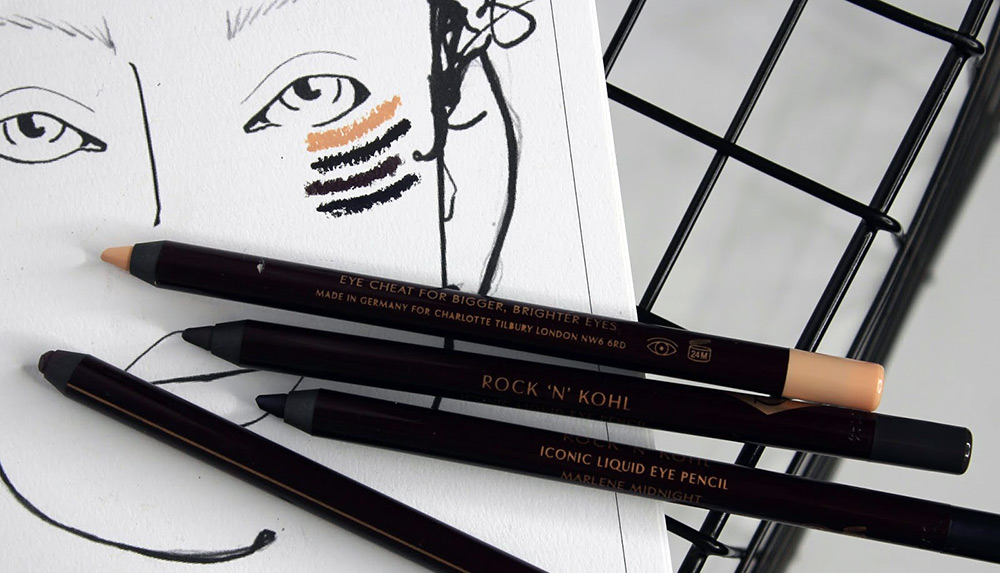
Comments and Reviews
Add a comment
Rating news
Shades of clothing that make women look younger
What shades of hair make women younger: rules and photos
Funny wedding dresses - photos and ideas
12 most expensive down jackets for the winter
How to look 25 at 40: tips from supermodels
Beautiful schoolgirls
Anti-aging haircuts and hairstyles for women
Fashionable skirts for autumn and winter
Fashionable women's trousers for the cold season
Fashionable and stylish sandals for summer 2024
Spring-summer 2024
 Fashionable dresses and tops with thin spaghetti straps
Fashionable dresses and tops with thin spaghetti straps
 Bandana tops: how to wear stylishly and beautifully
Bandana tops: how to wear stylishly and beautifully
 How to put together the perfect men's wardrobe for the summer
How to put together the perfect men's wardrobe for the summer
 Fashionable shorts for spring-summer 2024
Fashionable shorts for spring-summer 2024
 Fashionable skirts for spring-summer 2024: a guide to online shopping
Fashionable skirts for spring-summer 2024: a guide to online shopping
 The most fashionable dresses spring-summer 2024: styles and colors
The most fashionable dresses spring-summer 2024: styles and colors
 Fashionable total look 2024: ideas of images and trends
Fashionable total look 2024: ideas of images and trends
